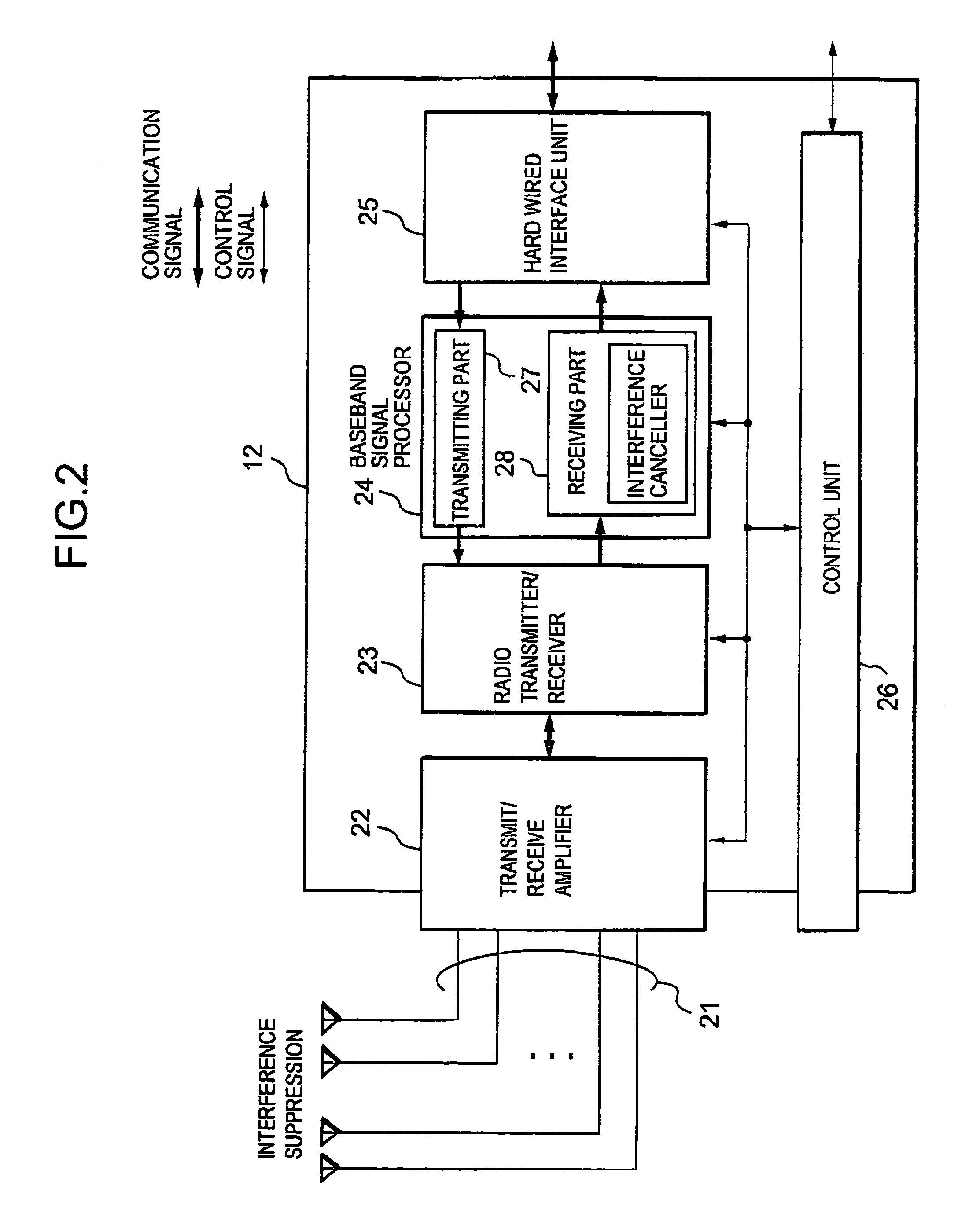Base station and mobile communication system
a mobile communication system and base station technology, applied in the field of mobile communication system, can solve the problems of increasing cross-correlation interference, affecting the transmission speed of mobile stations, so as to enhance the channel efficiency and the processing speed of systemic information.
- Summary
- Abstract
- Description
- Claims
- Application Information
AI Technical Summary
Benefits of technology
Problems solved by technology
Method used
Image
Examples
Embodiment Construction
[0026]Now, an embodiment of a mobile communication system according to the present invention will be described in detail with reference to the drawings.
[0027]FIG. 1 is a block diagram showing the configuration of the mobile communication system employing code division multiple accesses in one embodiment of the present invention, while FIG. 2 is a block diagram showing the configuration of a base station which has interference canceling means. Referring to FIGS. 1 and 2, numeral 11 designates a mobile station (MS), numeral 12 a base transceiver station (BTS), numeral 13 a base station controller (BSC), numeral 14 a mobile switching controller (MSC) numeral 15 a public switched telephone network (PSTN), numeral 21 an antenna constellation, numeral 22 a transmit / receive amplifier, numeral 23 a radio transmitter / receiver, numeral 24 a baseband signal processor, numeral 25 a hard wired interface unit, and numeral 26 a control unit,
[0028]As shown in FIG. 1, the mobile communication system...
PUM
 Login to View More
Login to View More Abstract
Description
Claims
Application Information
 Login to View More
Login to View More - R&D
- Intellectual Property
- Life Sciences
- Materials
- Tech Scout
- Unparalleled Data Quality
- Higher Quality Content
- 60% Fewer Hallucinations
Browse by: Latest US Patents, China's latest patents, Technical Efficacy Thesaurus, Application Domain, Technology Topic, Popular Technical Reports.
© 2025 PatSnap. All rights reserved.Legal|Privacy policy|Modern Slavery Act Transparency Statement|Sitemap|About US| Contact US: help@patsnap.com



